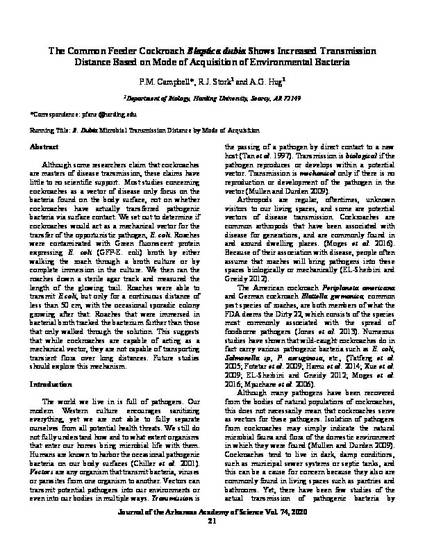
- mechanical vectors,
- arthropod,
- Blattaria
Although some researchers claim that cockroaches are masters of disease transmission, these claims have little to no scientific support. Most studies concerning cockroaches as a vector of disease only focus on the bacteria found on the body surface, not on whether cockroaches have actually transferred pathogenic bacteria via surface contact. We set out to determine if cockroaches would act as a mechanical vector for the transfer of the opportunistic pathogen, E. coli. Roaches were contaminated with Green fluorescent protein expressing E. coli (GFP-E.coli) broth by either walking the roach through a broth culture or by complete immersion in the culture.. We then ran the roaches down a sterile agar track and measured the length of the glowing trail. Roaches were able to transmit E.coli, but only for a continuous distance of less than 50 cm, with the occasional sporadic colony growing after that. Roaches that were immersed in bacterial broth tracked the bacterium further than those that only walked through the solution. This suggests that while cockroaches are capable of acting as a mechanical vector, they are not capable of transporting transient flora over long distances. Future studies should explore this mechanism.
Available at: http://works.bepress.com/ryan-stork/4/
